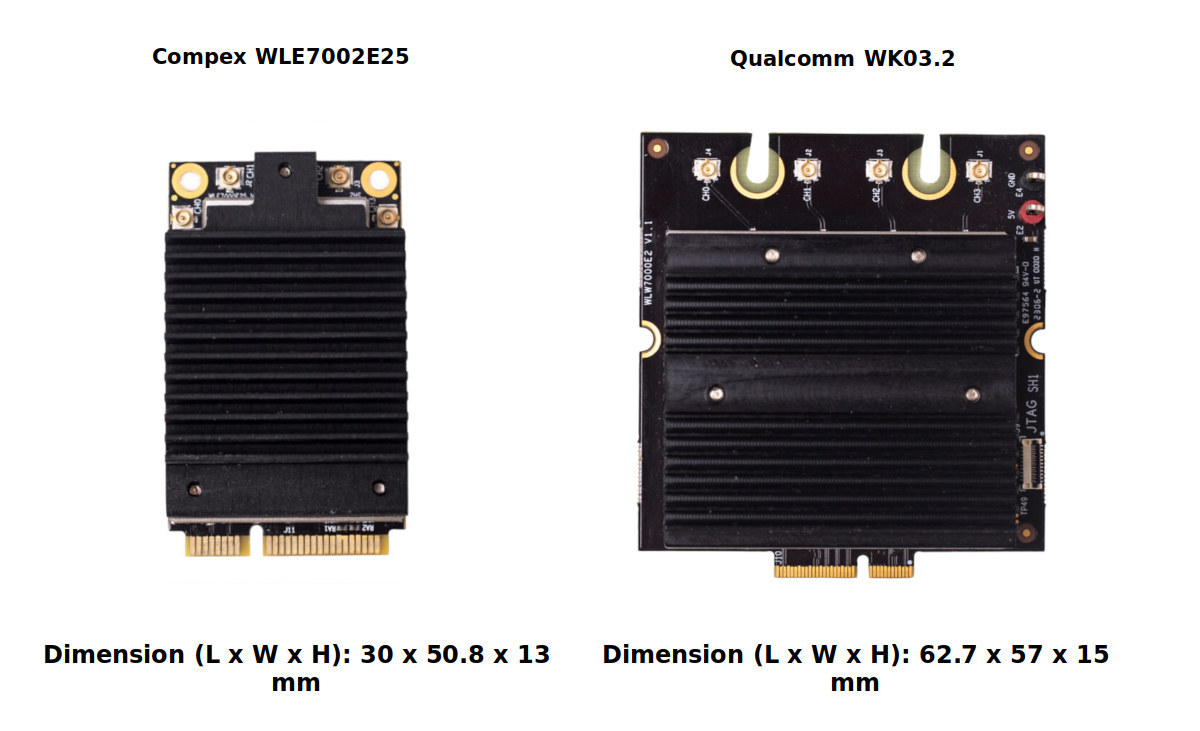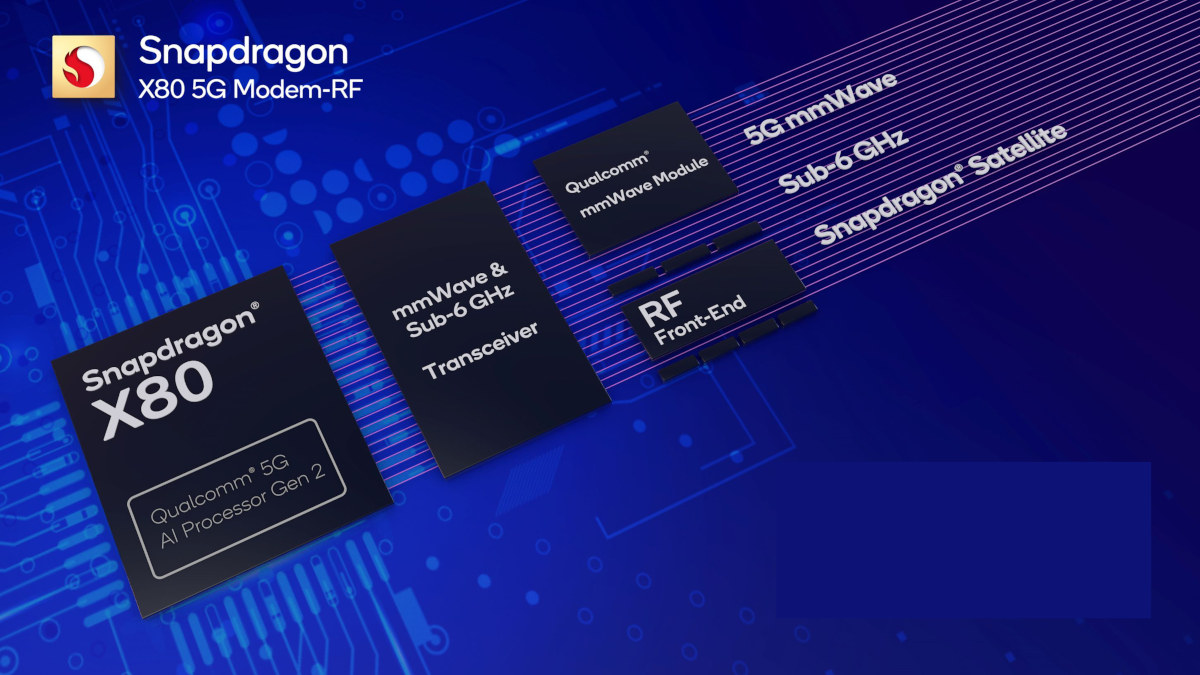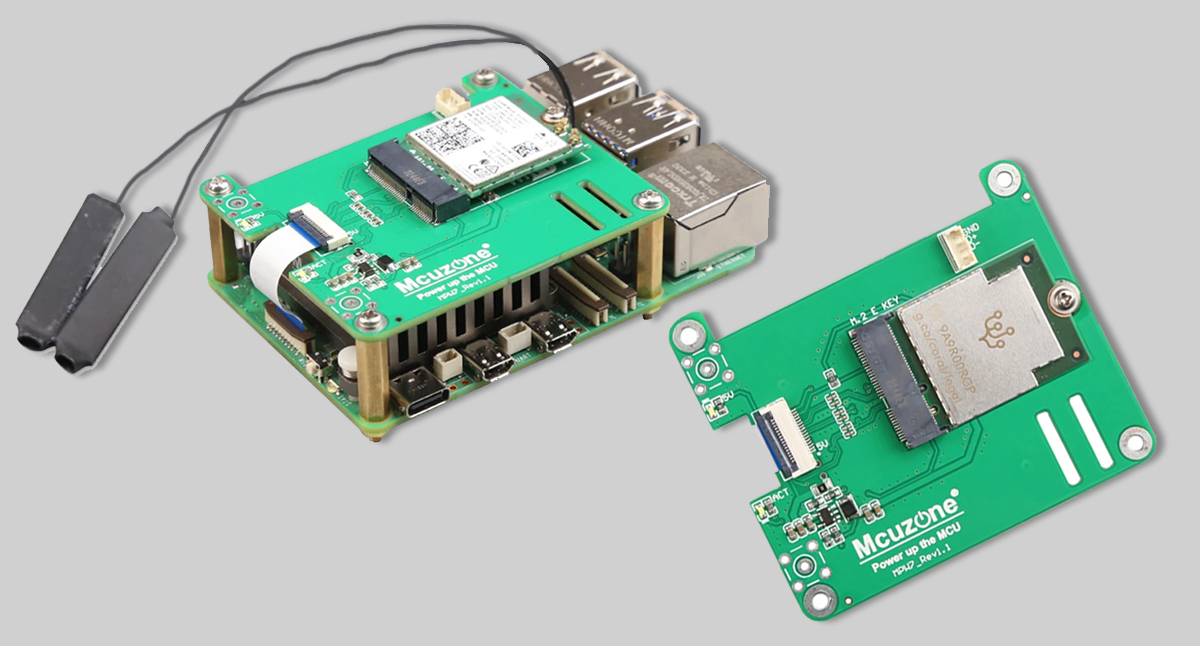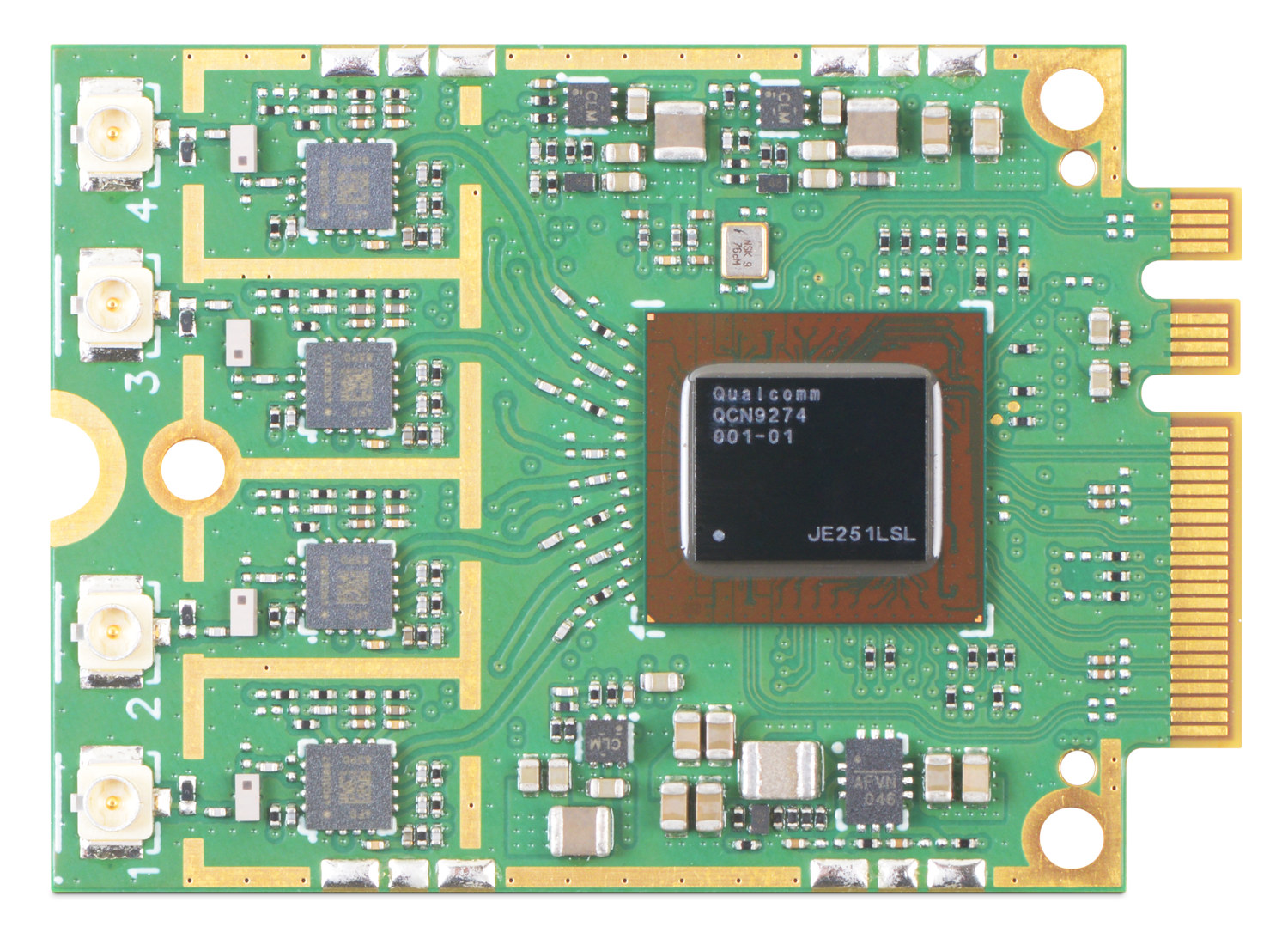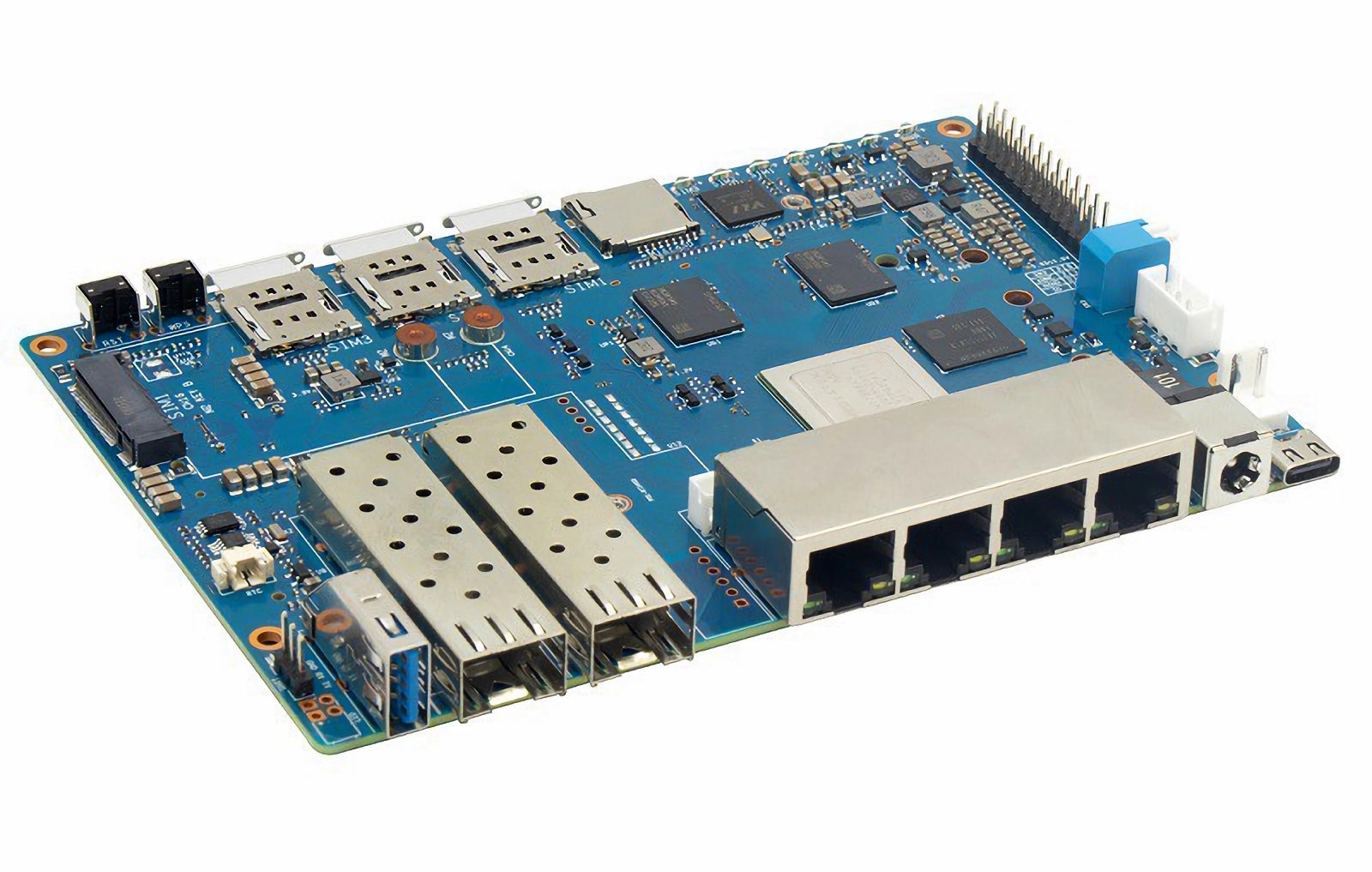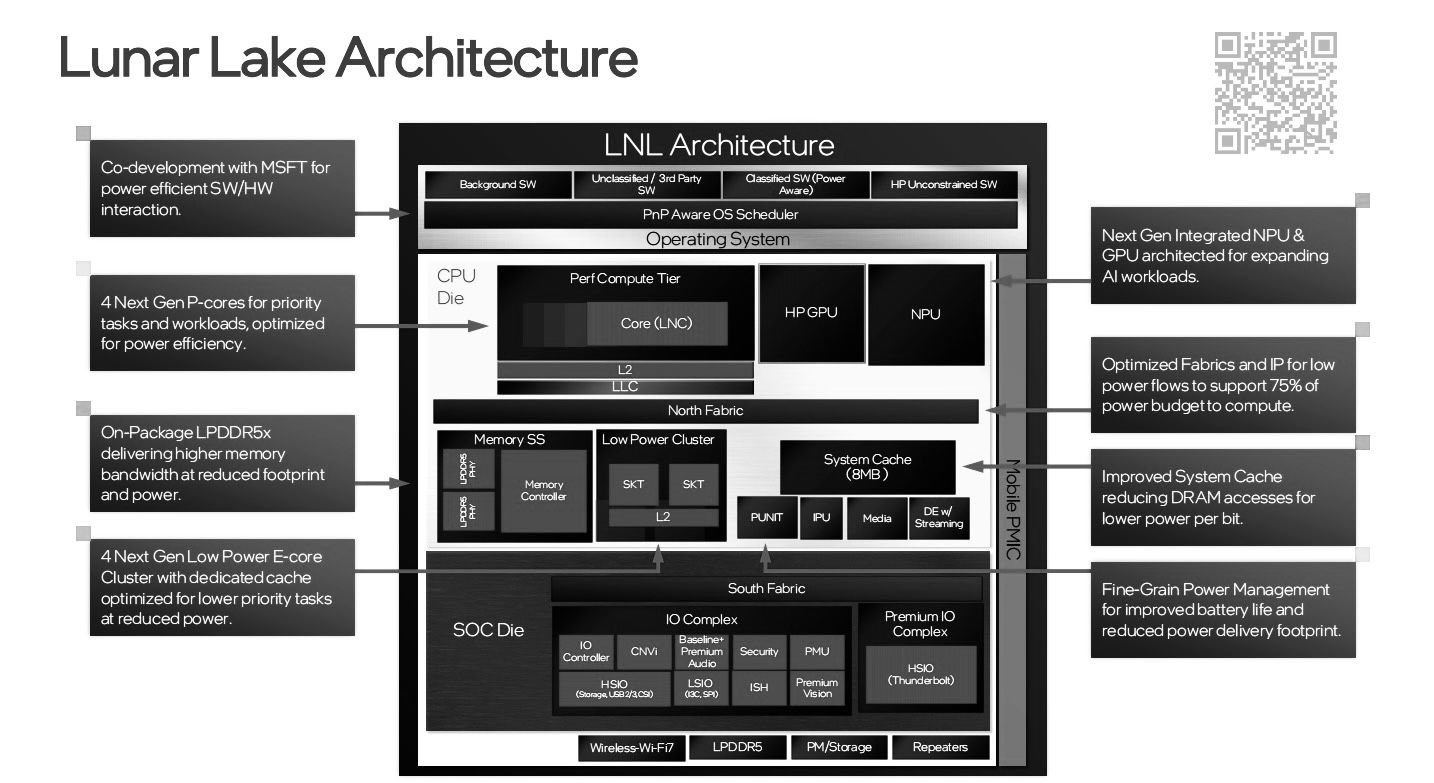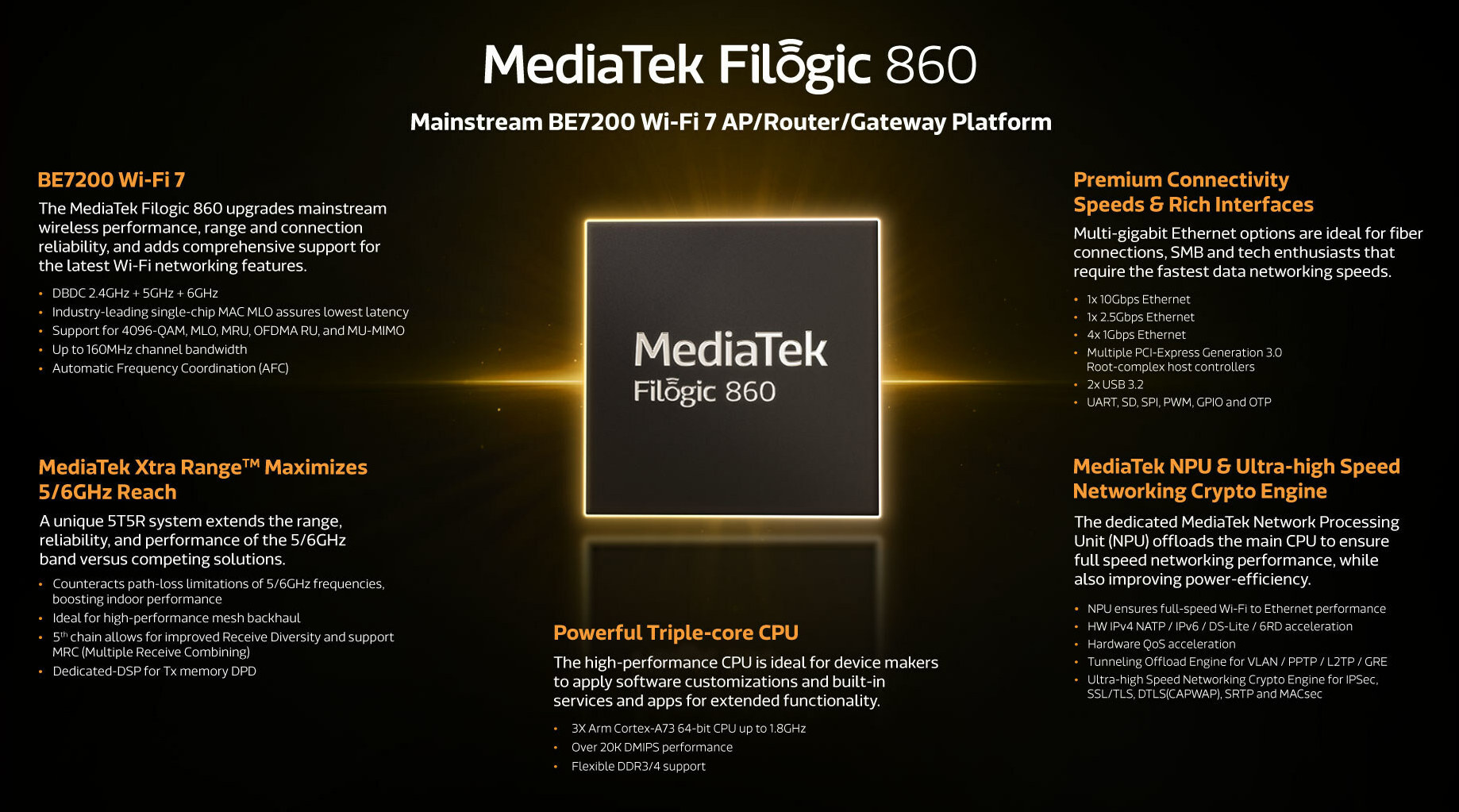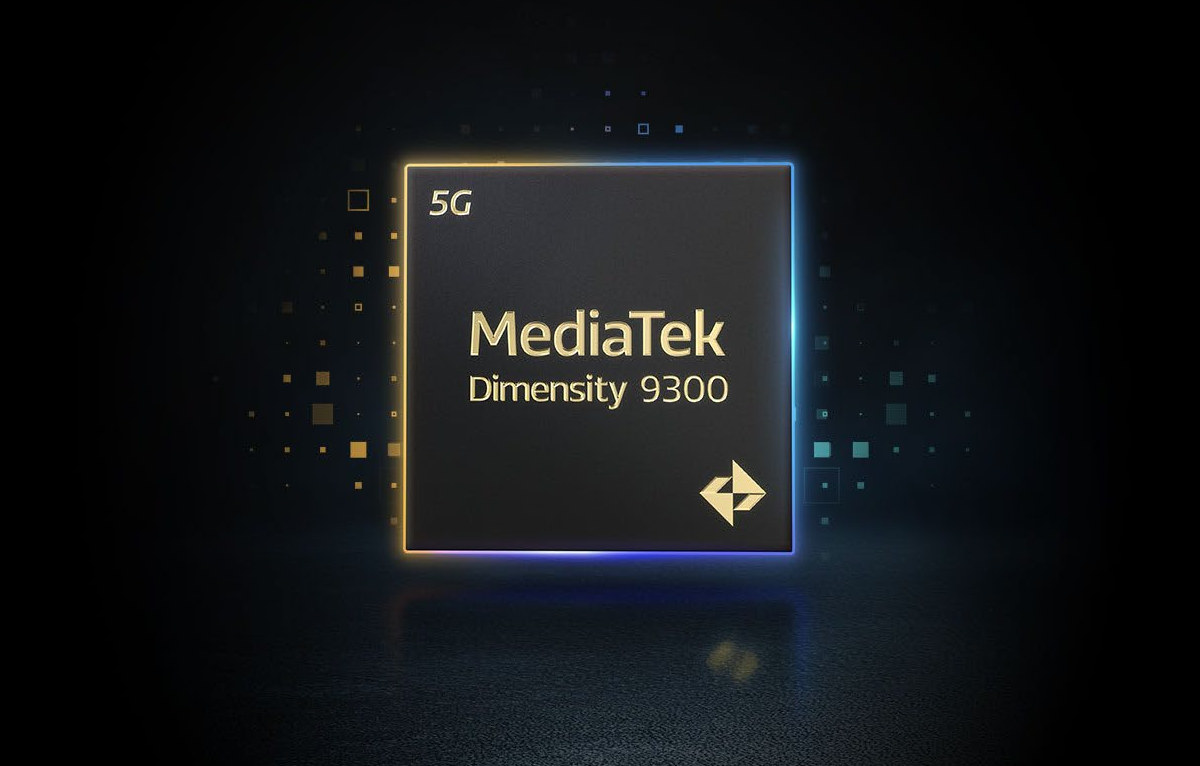In today’s hyper-connected world, reliable and high-speed wireless connectivity is no longer a luxury, but a necessity. WiFi standards have evolved rapidly. WiFi 6, which has been around for only a few years, is now being replaced by WiFi 7 or IEEE 802.11be. Equipment manufacturers are now rushing to phase in WiFi 7 products. Compex has released its latest WiFi 7 module WLE7002E25 to help shorten time to market. The Compex WLE7002E25 is a dual-band concurrent 2×2 2.4GHz and 2×2 5GHz radio based on Qualcomm’s Waikiki high-performance WiFi 7 chipset which is capable of over 10Gbps raw data rate. It is in a standard mini PCIe form factor. WiFi 7 in a Standard Mini PCIe Form Factor The standard mini PCIe footprint means that WLE7002E25 is readily compatible with existing systems and designs, particularly customers whose devices have been using WiFi 4 or WiFi 5 standard mini PCIe modules. This […]
Qualcomm unveils Snapdragon X80 5G modem with NB-NTN satellite connectivity, AI Hub, and FastConnect 7900 WiFi 7 chip
Mobile World Congress 2024 (MWC 2024) has just started, and Qualcomm had three major announcements with the introduction of the Snapdragon X80 5G modem with NB-NTN satellite connectivity, the Qualcomm AI Hub with over 75 AI models optimized for Snapdragon processors, and the FastConnect 7900 WiFi 7, Bluetooth, and Ultra Wideband (UWB) chip. Snapdragon X80 5G modem-RF system Snapdragon X80 5G modem specifications: Peak download speed – 10 Gbps Peak upload speed – 3.5 Gbps Cellular Modem-RF Specs – 10CC aggregation in mmWave, 5CC aggregation in 5G sub-6GHz Cellular Technology 5G NR, sub-6 GHz Dynamic Spectrum Sharing (DSS) LTE, WCDMA, LAA, TD-SCDMA, GSM/EDGE, CBRS mmWave, sub-6 carrier aggregation (FDD-FDD) sub-6 carrier aggregation (TDD-TDD), 5G FDD, 5G TDD, sub-6 carrier aggregation (FDD-TDD) 5G SA (standalone), 5G NSA (non-standalone) F + F ULCA, FDD UL MIMO, Switched Uplink, 3GPP R18-ready (5G Advanced-ready), 6x CA sub-6 downlink carrier aggregation, 1024-QAM sub-6, FR1 + […]
M.2 E-Key Wi-Fi 7 HAT for Raspberry Pi 5 also supports Google TPU
The Mcuzone MPW7 HAT for the Raspberry Pi 5 is designed to work with 2230 Wi-Fi 7 M.2 E-Key modules like the Intel BE200, AX210, and AX200, but the M.2 socket can also take Wi-Fi 6/6E modules as well as Google’s Tensor Processing Units (TPUs). It also integrates Bluetooth support via a 1.25mm USB interface on the HAT. Previously, we have covered many different HATs for the Raspberry Pi module, such as the Mcuzone MPS2280 M.2 NVMe HAT, Mcuzone MP4GM 4G LTE HAT, and the Sixfab 5G Modem Kit. Feel free to check those out if you are interested in Raspberry Pi 5 HATs. Mcuzone MPW7 M.2 E-Key Wi-Fi 7 module specification: M.2 E-Key socket supports 2230 modules WiFi modules compatibility – Supports M.2 E-Key modules like BE200, AX210, AX200, MT7922, Intel 8265C, etc… Bluetooth connectivity – 1.25mm 4-pin USB interface for Bluetooth integrated into the WiFi module connected to […]
8Devices Noni M.2 WiFi 7 module supports FirmUx embedded Linux distribution
8Devices Noni is a family of M.2 A+E-Key WiFi 7 modules built on the QCN9274/QCN6274 chipsets, delivering up to 11 Gbps link rate in 4×4 MIMO or split 2×2 + 2×2 configurations, and supporting FirmUX embedded Linux OS. The Noni modules support Multi-Link Operation (MLO) for simultaneous communication on different frequencies and adaptive interference puncturing in order to maintain performance in various environments and the QCN9274-based variants also support advanced features such as Provisioned Multi-Link, Dense deployment, and Location and RF sensing. 8devices Noni specifications: All the Noni modules support a 2-lane PCIe Gen 3 interface connection to the host device. 8devices Noni modules support the FirmUX embedded Linux platform that provides developers a choice between fully open-source or proprietary Qualcomm drivers. The OS enables WPA3 security, comes with a responsive UI dashboard, supports Wireguard VPN, and the company claims up to 34 percent improvement over OpenWrt on the earlier […]
Banana Pi BPI-R4 WiFi 7 router board is powered by a MediaTek Filogic 880 processor
Banana Pi BPI-R4 is a WiFi 7 router board powered by the MediaTek MT7988A (Filogic 880) quad-core Arm Corex-A73 processor with 4GB DDR4 RAM, 8GB eMMC flash, and 128MB SPI-NAND flash. The board also comes with two 10GbE SFP cages, four Gigabit Ethernet RJ45 ports, a USB 3.2 port, as well as an M.2 socket for a 4G/5G modem or an NVMe SSD, and two mini PCIe slots with PCIe 3.0 to support WiFi 7. Banana Pi BPI-R4 specifications: SoC – MediaTek MT7988A (Filogic 880) quad-core Arm Corex-A73 processor @ 1.8GHz with AI-powered packet accelerator System Memory – 4GB DDR4 Storage – 8GB eMMC flash, 128MB SPI NAND Flash, microSD card slot, M.2 Key M for NVMe SSD (see Expansion section for details) Networking 2x 10GbE SFP cages (option for 1x 10Gbe SFP cage and 1x 2.5Gbe PHY) 4x Gigabit Ethernet RJ45 ports (1x WAN and 3x LAN) USB – […]
Intel Lunar Lake hybrid mobile processors to integrate on-chip LPDDR5X memory (MoP)
While Intel Meteor Lake mobile processors are yet to become available, we already have a leak that provides quite a lot of details about the next-generation Lunar Lake hybrid mobile processor family (LNL MX) with supports for 8W to 30W base power designs and 16GB or 32GB on-chip LPDDR5x memory (Memory-on-Package, or MoP) to deliver higher memory bandwidth at reduced footprint and power. Developed in collaboration with Microsoft, the new Lunar Lake processor will come with four P-cores and four low-power E-cores, a new generation NPU and GPU architecture for AI workloads, and improved power management for lower power consumption (40% scenario power reduction) and improved battery life. Four SKUs are currently planned with either 16GB or 32GB dual-channel LPDDR5X memory: Core 7 MS3 (+ MoP) – Octa-core “12M” processor with 4x P-cores, 4x E-Cores, 8-core Xe2-LPG GPU, and 6-tile (12K9M) NPU Core 5 MS1 (+MoP) – Octa-core “8M” processor […]
MediaTek Filogic 860 & Filogic 360 WiFi 7 chipsets target mainstream BE7200 routers and clients
MediaTek has unveiled two new WiFi 7 chipsets with the Filogic 860 tri-core Arm Cortex-A73 SoC designed for up to BE7200 mainstream routers and gateways and Filogic 360 WiFi 7 and Bluetooth 5.4 chip for client devices such as smartphones, PCs, laptops, set-top boxes, OTT streaming boxes, etc… for up to 2.9 Gbps bandwidth. The new Filogic 860 and Filogic 360 chipsets provide more cost-effective alternatives to the Filogic 880 SoC for up to BE36000 routers and Filogic 380 clients chip capable of up to 6.5 Gbps PHY data rate, both of which were introduced in May 2022. MediaTek Filogic 860 Filogic 860 specifications: CPU – 3x Arm Cortex-A73 cores clocked at up to 1.8 GHz Network Processing Unit (NPU) – Hardware QoS acceleration and Tunneling Offload Engine for VLAN / PPTP / L2TP / GRE Networking Crypto engine (EIP-197) – For IPv4 NATP / IPv6 / DS-Lite / 6RD […]
MediaTek drops efficiency cores in Dimensity 9300 Cortex-X4/A720 mobile SoC
MediaTek Dimensity 9300 is a premium octa-core 5G mobile SoC with two clusters of four Cortex-X4 cores and four Cortex-A720 cores, but doing without any Cortex-A520 efficiency core, plus the latest Arm Mali-G720 GPU, and a MediaTek APU 790 neural processing unit (NPU) capable of support generative AI and large language models (LLM) with up to 33 billion parameters. Arm invented big.LITTLE and then DynamIQ technologies in order to mix cores with different power efficiency and performance characteristics in order to improve power consumption. Their latest launches included the Cortex-X4 premium core, Cortex-A720 performance/big core, and Cortex-A520 efficient/LITTLE core, but MediaTek decided to do without the Cortex-A520 in the Dimensity 9300 which strikes me as odd for a mobile SoC where power efficiency is important for a long battery life. MediaTek Dimensity 9300 specifications: Octa-core CPU with DynamIQ 4x Arm Cortex-X4 at up to 3.25GHz 4x Arm Cortex-A720 up to […]


